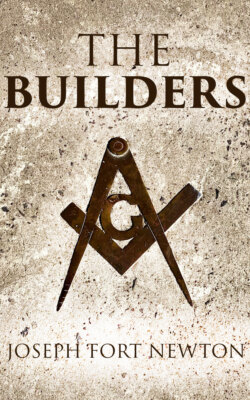Читать книгу The Builders - Joseph Fort Newton - Страница 12
На сайте Литреса книга снята с продажи.
FOOTNOTES:
Оглавление10. There are many books in this field, but two may be named: The Lost Language of Symbolism, by Bayley, and the Signs and Symbols of Primordial Man, by Churchward, each in its own way remarkable. The first aspires to be for this field what Frazer's Golden Bough is for religious anthropology, and its dictum is: "Beauty is Truth; Truth Beauty." The thesis of the second is that Masonry is founded upon Egyptian eschatology, which may be true; but unfortunately the book is too polemical. Both books partake of the poetry, if not the confusion, of the subject; but not for a world of dust would one clip their wings of fancy and suggestion. Indeed, their union of scholarship and poetry is unique. When the pains of erudition fail to track a fact to its lair, they do not scruple to use the divining rod; and the result often passes out of the realm of pedestrian chronicle into the world of winged literature.
11. The Word in the Pattern, Mrs. G.F. Watts.
12. The Swastika, Thomas Carr. See essay by the same writer in which he shows that the Swastika is the symbol of the Supreme Architect of the Universe among Operative Masons today (The Lodge of Research, No. 2429, Transactions, 1911-12).
13. Signs and Symbols, Churchward, chap. xvii.
14. Here again the literature is voluminous, but not entirely satisfactory. A most interesting book is Signs and Symbols of Primordial Man, by Churchward, in that it surveys the symbolism of the race always with reference to its Masonic suggestion. Vivid and popular is Symbols and Legends of Freemasonry, by Finlayson, but he often strains facts in order to stretch them over wide gaps of time. Dr. Mackey's Symbolism of Freemasonry, though written more than sixty years ago, remains a classic of the order. Unfortunately the lectures of Albert Pike on Symbolism are not accessible to the general reader, for they are rich mines of insight and scholarship, albeit betraying his partisanship of the Indo-Aryan race. Many minor books might be named, but we need a work brought up to date and written in the light of recent research.
15. Exod. 20:25.
16. Antiquities of Cornwall, Borlase.
17. Lost Language of Symbolism, Bayley, chap, xviii; also in the Bible, Deut. 32:18, II Sam. 22:3, 32, Psa. 28:1, Matt. 16:18, I Cor. 10:4.
18. Tree and Pillar Cult, Sir Arthur Evans.
19. I Sam. 2:8, Psa. 75:8, Job 26:7, Rev. 3:12.
20. Freemasonry in China, Giles. Also Gould, His. Masonry, vol. i, chap. i.
21. Chinese Classics, by Legge, i, 219-45.
22. Essay by Chaloner Alabaster, Ars Quatuor Coronatorum, vol. ii, 121-24. It is not too much to say that the Transactions of this Lodge of Research are the richest storehouse of Masonic lore in the world.
23. Matt. 16:18, Eph. 2:20-22, I Cor. 2:9-17. Woman is the house and wall of man, without whose bounding and redeeming influence he would be dissipated and lost (Song of Solomon 8:10). So also by the mystics (The Perfect Way).
24. Heb. 3:4.
25. Isa. 28:16.
26. Psa. 118:22, Matt. 21:42.
27. I Pet. 2:5.
28. Prov. 8:27-30, Revised Version.
29. Amos 7:7, 8.
30. Ezk. 48:20.
31. Rev. 21:16.
32. Rev. 3:12.
33. II Cor. 5:1.
34. Egyptian Obelisks, H.H. Gorringe. The obelisk in Central Park, the expenses for removing which were paid by W.H. Vanderbilt, was examined by the Grand Lodge of New York, and its emblems pronounced to be unmistakably Masonic. This book gives full account of all obelisks brought to Europe from Egypt, their measurements, inscriptions, and transportation.
